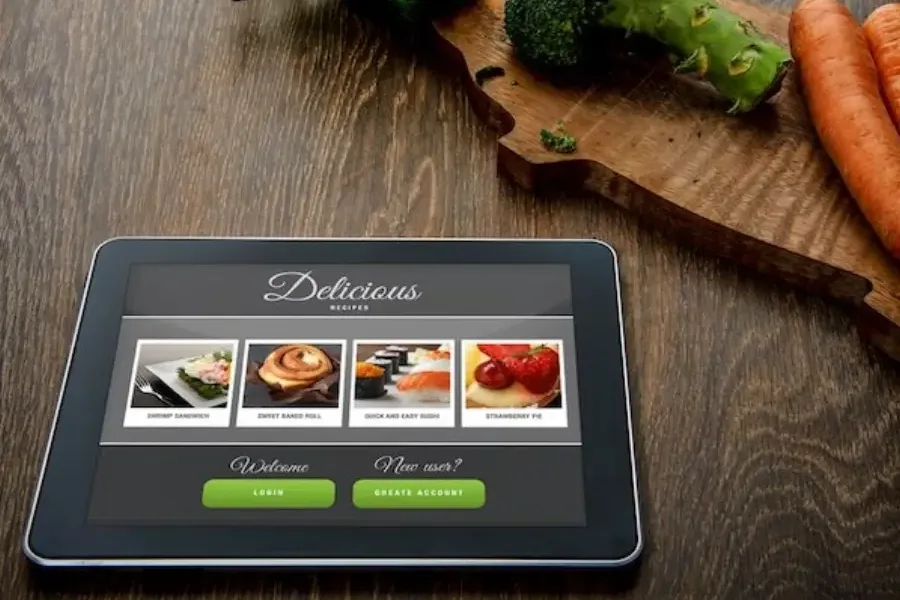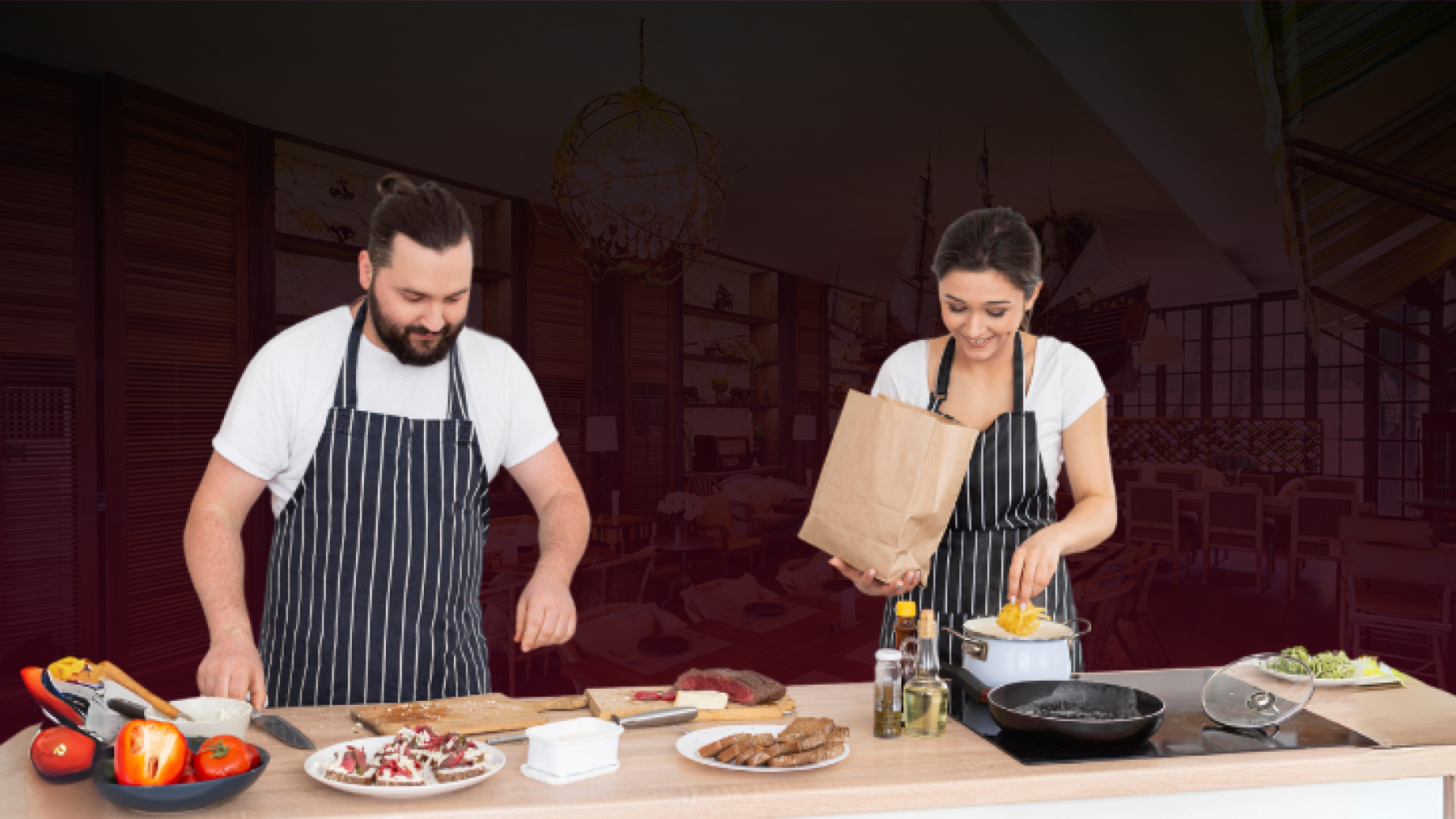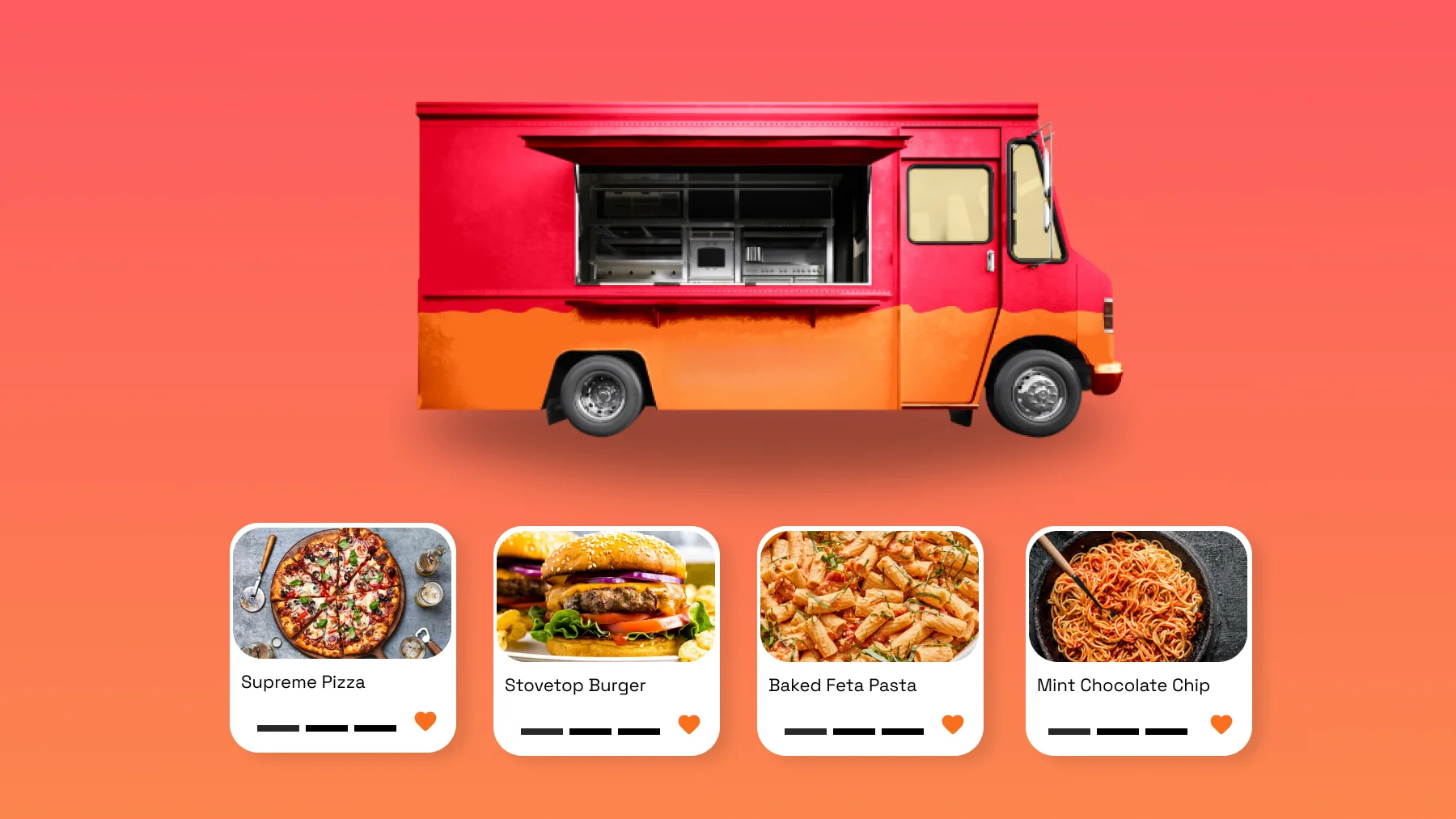A Complete Guide On Writing ‘Tasty’ Online Restaurant Menu Descriptions
A menu always tells a restaurant’s story. It is the space that explains to customers your culinary strengths and also brags about your brand persona. It is the first material handed over to any customer who settles down at a restaurant table expecting a memorable meal and a dining experience. But, if diners already knew everything about your menu offerings, wouldn’t you be surprised? Isn’t that a breeze for restaurants?
A recent research states that 93% of people read online menus before making choices about which restaurant they must dine in. You might have been chosen because of the variety of your appetizers and starters. Thus, online menus play a vital role in inspiring people to choose you and decide on the menu items that they wish to relish, even before they walk into your restaurant.
While Menu Matters, Online Menus Matter a Lot
If you are yet to create an online menu for your restaurant, here’s why it is important:
1. Meet Your Customers Where They Are:
As we said earlier, people are most likely to look for your menu online before deciding (or not deciding) to make a table reservation or walk into a restaurant. During such instances, it is the restaurant’s online menu that creates the best first impression.
A captivating and unique online presence becomes crucial as a majority of the world’s population is resorting to online searches before making restaurant choices.
7 out of 10 people choose a business or make a purchase based on online data and information.
And without a menu that appears beautifully on search results, a restaurant faces the risk of going undiscovered by new customers.
2. Search Engines Prefer Searchable Text:
By ‘searchable’ menu, we mean that you cannot afford to have a PDF form of the restaurant’s menu uploaded on your website. That would not enable search engines to identify your menu and prioritize them when displaying results for relevant searches. While a PDF can be optimized to be crawled by search engines, that is not a professional approach. Once optimized, the menu still needs to be pushed out to all platforms where people are probably searching for a good restaurant to eat.
3. You Have to Be Found by Customers Easily:
If there is a new customer who has never dined in your restaurant or even heard about it, how will they visit your website by typing in your restaurant’s name? They would only be making searches on Google like “French Cuisine Near Me”, “American Food Near Me”, etc. You, as a restaurant owner, would want to appear in such search results if you offer French or American food. So, you must make SEO friendly restaurant website and menu, so that your offerings are highlighted in the first few prime spots when people make relevant searches.
When your website has a searchable menu, specific menu items or your signature dishes can be found through normal searches.
4. Better Local Search Results:
If a hungry customer is looking for Italian cuisine, specifically spaghetti, they will search on Google for “spaghetti near me”. According to the search results offered by Google, they will make their choices. The search results will also contain the link to the restaurant’s entire menu which can be clicked by diners to explore the culinary choices offered to them. Vital information like the address and phone number will also be instantly available. Customers can also quickly navigate to the restaurant website to know about it in detail.
5. Search Engine Crawlable:
If the online menu is not crawlable, you have lost a potential customer. Search engines have algorithms that follow links. When Google and other crawlers of search engines find a restaurant’s website, they read the content and save it in an index. Crawlers look and identify HTML content, also known as webpage content. So, if information about your spaghetti is offered as a PDF and not in the form of HTML, search engines will not be able to extract information from your menu. Despite offering what diners are precisely looking for, you lose the game because of your undiscoverable online content.
6. Acts as a Marketing Aid:
Marketing is key to let people know that you even exist. Restaurants have plenty of options to use for marketing – from social media advertising to the local media. An online menu is yet another way that restaurants can use to reach out to the online audience. Restaurants must realize that their lifelines are the food and drinks served by them and highlight them in every way possible. Is there any better place to execute it than the menu?
When the restaurant’s menu and other relevant business information are made available online, researchers can easily be converted into customers. People just look for basic information about restaurants while searching for best spots to dine-in or order food online. When it is offered to them generously, they are delighted and stay dedicated to your brand forever.
97% of consumers search online to find a local business. So, your menu and business information must be available online.
7. Helping Customers Know What to Expect in Advance:
If someone is searching for dining out options online, looking at the delicious images of your restaurant’s signature dishes and reading positive online reviews will motivate them to choose your restaurant over the competitor. But, knowing all the culinary options that a restaurant offers is essential to make the final decision.
If the majority of the items on your online menu excites a hungry diner, they will be ready to visit you or order from you. Keeping information readily available on online spaces where people are looking for restaurants will help the business gain popularity and, ultimately, business.
78% of local mobile searches result in an offline purchase.
18% of location-based mobile searches result in a purchase within 24 hours.
How to Optimize Online Menu to Maximize Revenue
1. Integration With Other Online Ordering Platforms:
One of the most important benefits of an online menu system is ‘Brand Loyalty’. A restaurant can maximize the benefits by optimizing this approach. It is not sufficient to place a menu on the restaurant website alone. One must also integrate it with other social media and third party online ordering platforms to draw in every potential browsing customer. There are several online food ordering companies that you can make use of to generate online traffic and make people click the order button.
2. Highlight Best Sellers:
If you have a modern POS system in your restaurant, you will have valuable data analytics at hand that tells you about recipes which are best sellers and high-profit yielding. Use this data to highlight those dishes better (with superior quality images) on your online menu. This way you subconsciously make the customer see what you expect them to see and steer them towards making an order of your best sellers. Best sellers have gained that status purely because of their distinct taste. When you sell them to more people, especially new customers, your restaurant will eventually get associated with tasty, good food and enjoy more popularity in the long run.
3. Using Online Secondary Selling Techniques:
Most often, people do not order additional food because they are not aware of what is in offer. So, a restaurant must use the online menu to upsell products by suggesting additions to the main courses that they have opted for.
For instance, if someone has ordered a steak online, a pop-up must emerge on their screen showcasing other complementary dishes that will go well with the steak. Providing an add-on button with a list of dips and sauces will boost sales and maximize revenue.
4. Customization of Orders:
While providing an online menu and facilities for diners to make online food orders, also allow them to customize it. This personalization will make them feel important. Eventually, they will get addicted to your restaurant. This is possible by adding a ‘CUSTOMIZE’ button on the online food menu.
If you are running a burger joint, you can offer a variety of toppings during customization. You can allow customers to make the burger vegetarian or even vegan. Information about specific food allergies or ingredient intolerances can be provided on the online menu so that diners make informed decisions along with their preferences. Such preferences of customers can be noted to later send them promotional messages of certain events or dishes that they have shown interest in.

Essential Benefits of an Online Menu
1. Positive Guest Experience:
An online menu helps restaurateurs in giving their guests an outstanding experience by using an attractive online menu display and providing ease of use for customers (adding or removing orders from the cart, locating special menu choices and also adding special preferences).
2. Quicker Ordering Process:
Guests can be allowed to order food themselves when they access the online ordering link through the restaurant’s website. By doing so, customers get a glimpse of the day’s menu, a list of the restaurant’s best sellers and also the chef’s recommendations. Customers can place or remove certain items from their order list at their own pace, with just a few clicks. This reduces lead times significantly and increases customer satisfaction.
3. Easy Updation of Menu & Prices:
Hard copies of menu books need to be replaced every time a change is made in the menu or its price. If restaurants strike across the printed material or use cover-up tapes, it will make menu books look unattractive and unappealing. However, an online menu will facilitate restaurant menu and price updates in a few seconds. Even a physical presence is unnecessary to update the menu – it can be done from any place, at any time.
4. Increase Sales Through Cross-selling:
With an online menu, a specific food or beverage item can be promoted. Food and drinks that were once not preferred by most guests can turn into profit churners and the new favorites.
5. Win Competition:
The restaurant industry has become extremely competitive in the past few years. With the pandemic hitting the industry further, restaurants are looking for unique ways to attract customers and win competition. Offering great value and a delightful service is one great way to make your restaurant the first and foremost choice of customers.
If competitors are utilizing automation software in their daily restaurant operations, it is time that you embrace it too. An online menu fulfills the task of modernizing the restaurant and also making it more advanced than the others in the fray.
With automation, customers are happy with the service, they share great experiences with people and on social media platforms, eventually improving the restaurant ratings.
How to Write a Captivating Online Menu
1. With an online menu, you earn the benefit of a strong first impression.
2. Highlight recipes that are the best sellers or the chef’s recommendations.
3. Use a unique and clever strategy to impress customers like no other restaurant does.
4. Use a legible font along with an appropriate and appetizing color.
5. Use a clear language that specifies details about the diet, taste and flavor.
6. Make the people feel that they are offered the best of the local cuisine.
7. Mention offers and discounts clearly so that people’s attention turns towards such revenue generating elements.
8. If your cuisine involves organic ingredients sourced from local farmers, promote that message in every possible way.
9. Avoid using the currency signs as they distract the diner’s attention from your delicious menu to the amount that they would pay at the end of the meal.
10. Create separate categories for starters, appetizers, main courses, desserts and beverages so that the navigation is made simple for restaurant website users.
11. Include locally popular recipes on the online menu as people (especially travellers) wish to taste the dishes that the town is known for. Also, explain the ingredients used in the local language.
12. Use high-quality images with complementing and engaging text. Keep the number of images to a bare minimum so that the website loading speed is not affected. Also include attractive visual elements like small graphic presentations for every food category.
13. Use words that arouse the senses. Example: crunchy, smoky, chewy, crispy, tangy, tender, flaky, doughy, etc. Use words that describe your preparation as well. Example: toasted, sauteed, stuffed, simmered, marinated, deep-fried, fermented, sizzling, etc.
14. Include sentimental references. Use statements that indicate how your food has been prepared with love and care. Words like mom’s cooking, home-made, etc. make people emotionally connected to the food and order more than they intended to.
What to Avoid in an Online Menu
- Poor categorization of items on the menu. Simply listing all the recipes offered by a restaurant will not help. Items must be arranged according to categories so that people browsing the restaurant website do not have to search for details.
- Avoid placing too many items on an online menu. Highlight your signature dishes, your specials for the day, menu items with offers and discounts.
- A static online menu will definitely bore customers. Online menus must be constantly changed in a dynamic manner.
- Errors in pricing must definitely be avoided in an online menu. If people are charged more than what they saw as a price online, they will feel deceived and never return to the restaurant.
- Not giving proper attention to customer psychology. Customers are the king in every industry, more so in the restaurant industry.
Creating an online menu is possible only when a restaurant has its exclusive website.
Don’t have a restaurant website yet?
Use the best restaurant website and app builder to facilitate the creation of an enticing and profitable restaurant website with an integrated online ordering system for increased revenue and digital dominance. Create a restaurant website or upgrade an existing one within minutes.
Conclusion
An online menu is essential for marketing your restaurant in today’s tech world. Attract customers simply by providing them with vital information that they are looking for. Make an online menu that does the digital talking.
LATEST BLOG POST
What Is Happy Hour? 10 Foolproof Ways to Make Your Happy Hour Successful
ShareTweetSharePin0 Shares
What does a hostess do at a restaurant? Duties And Responsibilities
ShareTweetSharePin0 Shares
200 + Cafe Name Ideas That Will Make Your Business Stand Out
ShareTweetSharePin0 Shares
How to Craft an Effective Restaurant Mission Statement: A Step-by-Step Guide
ShareTweetSharePin11 Shares
How to Create Food Truck Business Plan? Complete Guide
ShareTweetSharePin11 Shares
How to Choose the Right Restaurant Name (+ 190 Great Ideas & Examples)
ShareTweetSharePin11 Shares







